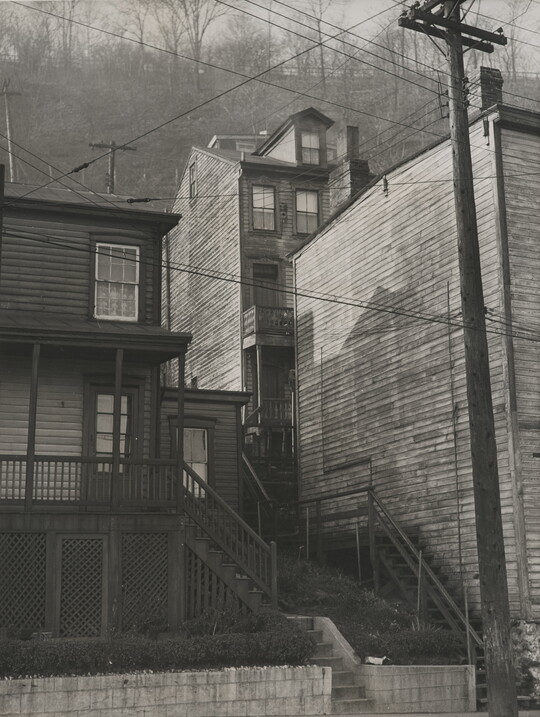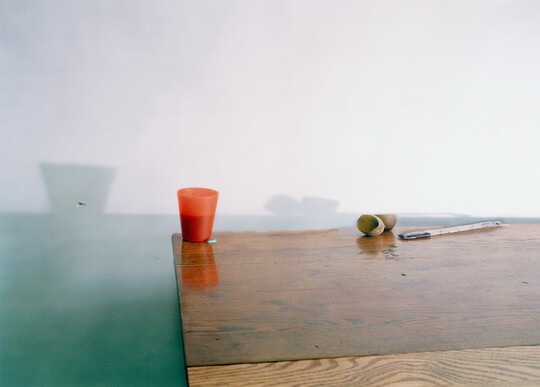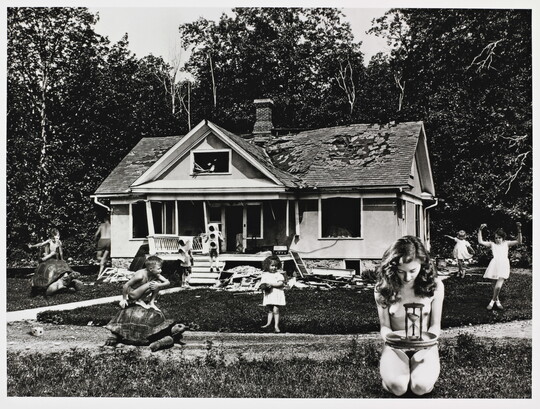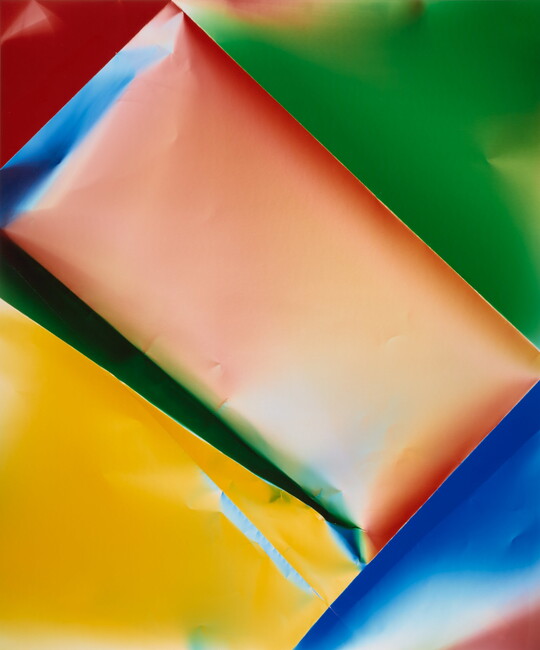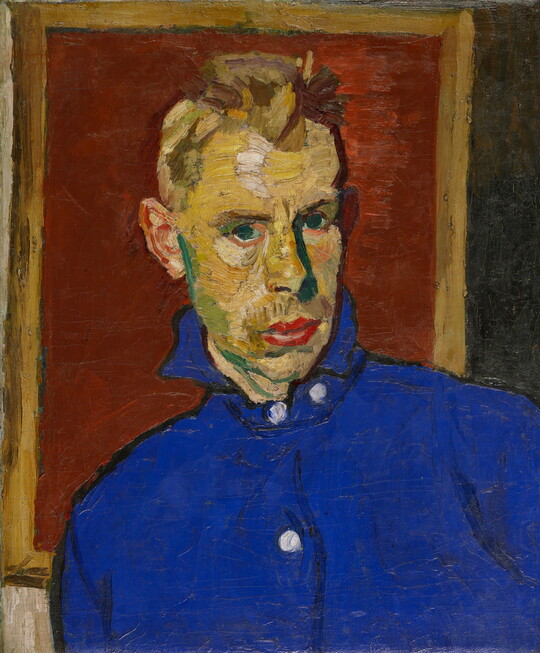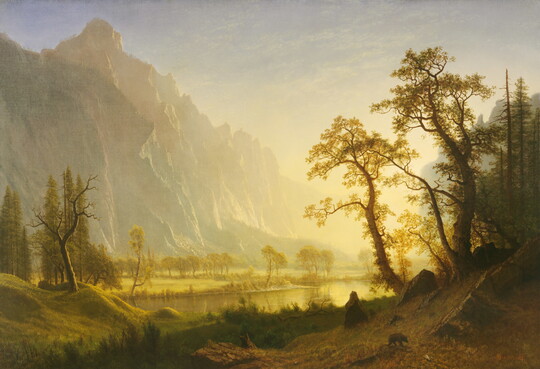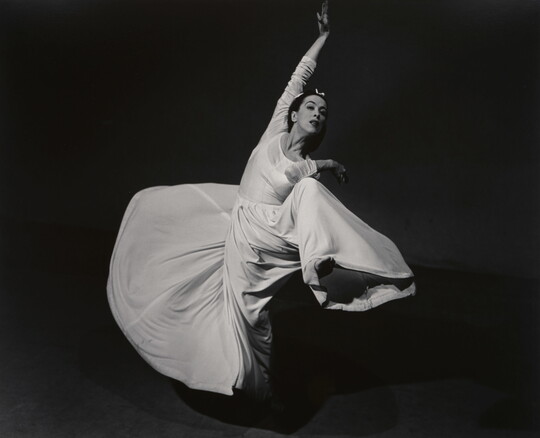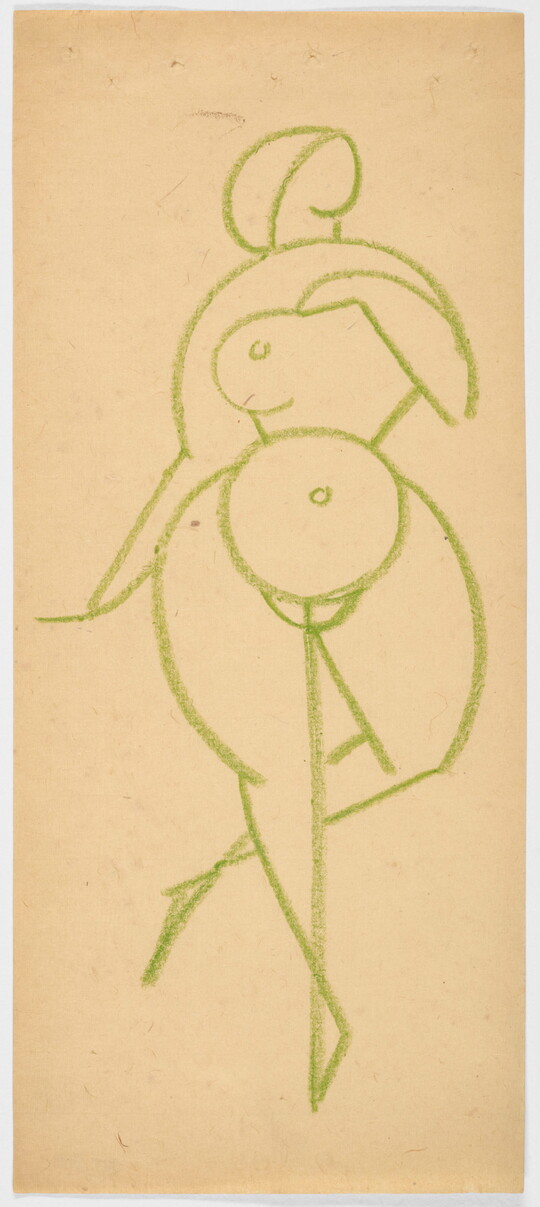

Artwork Image
Photo:
Controls
Attention, Company!
Object Details
-
Date
1878
-
Object Type
Paintings
-
Medium
Oil on canvas
-
Dimensions
36 x 28 in.
-
Inscriptions
Recto:
signed and dated, u.l.: WMH [monogram] HARNETT \ 1878
-
Credit Line
Amon Carter Museum of American Art, Fort Worth, Texas
-
Accession Number
1970.230
-
Copyright
Public domain
Object Description
In Harnett’s picture, a young boy wears an improvised soldier’s costume. Wearing a paper tricorn hat and holding a wooden rod like a rifle, he stares directly at us. The painting does not identify the boy, but he is probably Isaac White, an 8-year-old formerly enslaved child who appeared in a portrait series published by the National Freedman’s Relief Association in 1864. Harnett may have copied Isaac’s likeness from one of these photographs, adding the costumed accessories and the wall marked with graffiti.
Scholars have debated the meaning of this work. Some have speculated that the picture cruelly mocks efforts at the time to venerate Black Civil War veterans. But others have pointed to the ways that Harnett’s rendering breaks from crude stereotypes, particularly the child’s arresting gaze and his carefully individualized features, suggesting that Attention, Company! says something profound about the precarious status of Black Americans during Reconstruction.
—Text taken from the Carter Handbook (2023)
Additional details
Location: On view
See more by William M. Harnett
Tags
-
Fresh Voices 2024: Art Discovery Guide
Media type: PDF

-
Voces nuevas 2024: Guía para descubrir el arte
Media type: PDF

-
Itty-Bitty Art: Fine Motor Fun
Media type: PDF

-
Cachitos de arte: Diversión motora fina
Media type: PDF

-
Attention, Company! coloring sheet
Media type: PDF
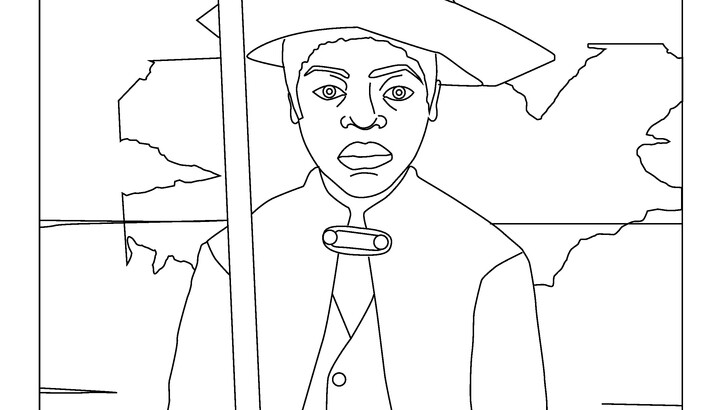
Video:
Audio:

Visual description: Attention, Company!
Video:
-
This 19th-century artist painted a very realistic portrait of a Black boy. In fact, this popular painting style of the period is known as tromp l’oeil, French for “fools the eye,” and the artist’s effort to accomplish this was masterfully achieved. The young boy with brown skin, large, dark eyes, and plump lips is shown from about the mid-thigh up as he stands in front of a dark-green, wooden wall covered with torn paper advertisements and carved graffiti. He looks straight ahead at the viewer in an attentive pose with his arms at his sides, imitating that of a soldier. In his right hand, he holds a wooden stick, taller than him, upright like a rifle. A tricorn hat made of newspaper sits on his head at a slight angle so that his black, curly hair can be seen. He wears a long-sleeved, tan coat, fastened at the neck by a thin strip of fabric with silver buttons on each side. The jacket is wrinkled and looks worn, indicated by a patch on his right elbow and the tattered, brown piping along its edges. Under his coat is a gray vest with mismatched buttons and more worn brown piping. The top and bottom buttons of the vest are shiny, smooth brass and the middle button is white, with stitches in the middle holding it in place. Under the boy’s vest is a cream-colored, collarless shirt. The boy's pants match his vest.
-
How has the purpose, media, and style of portraits changed and/or stayed the same throughout time?
How has childhood, and the place of childhood in the national imagination, changed throughout time?
How might the background, clothes, facial expression, and body language depicted in a portrait reveal something about the sitter?
How might the style, subject, and depiction of the sitter reveal something about the artist who created the portrait?
-
Grades 4–8
Show students the image Attention, Company! and, as a group, discuss the artwork. Who is the boy in the image? What is he doing? Give students a cinquain poem template and have them write a poem using adjectives that describe this boy and verbs that describe things he might do.
All Levels
Activity 1
Provide students with a small printout of the work of art. Students will glue the image to a larger piece of paper and extend the scene using pencils and colored pencils.Activity 2
Using any media that you may be exploring with your students, have students create a portrait of themselves with a game they enjoy. For older students, have them create a portrait of themselves as younger children with a game from their youth. Example: As a child I often had water-balloon fights with my siblings, so my portrait might be me holding a water balloon in front of our brick house near the water hose.
Share Educator Resources
Amon Carter Disclaimer
This information is published from the Carter's collection database. Updates and additions based on research and imaging activities are ongoing. The images, titles, and inscriptions are products of their time and are presented here as documentation, not as a reflection of the Carter’s values. If you have corrections or additional information about this object please email us to help us improve our records.
Every effort has been made to accurately determine the rights status of works and their images. Please email us if you have further information on the rights status of a work contrary or in addition to the information in our records.
Related Works
-
Untitled (Pittsburgh Housing), 1930s
Manuel de Aumente
Gelatin silver print
P2009.11
-
Untitled #52, 2002
Laura Letinsky
Dye coupler print
P2007.3
-
The Time Game, 2011
Jane Hammond
Gelatin silver print
P2011.29
-
Zerogram, 2017
Ellen Carey
Dye coupler print
P2018.40
-
Self-Portrait, 1919
Stuart Davis
Oil on canvas
1975.29
-
Sunrise, Yosemite Valley, ca. 1870
Albert Bierstadt
Oil on canvas
1966.1
-
Parson Weems' Fable, 1939
Grant Wood
Oil on canvas
1970.43
-
Martha Graham - Letter to the World (Swirl), 1940
Barbara Morgan
Gelatin silver print
P1974.21.17
-
Green Nude, ca. 1920
Gaston Lachaise
Crayon on paper
2018.4



